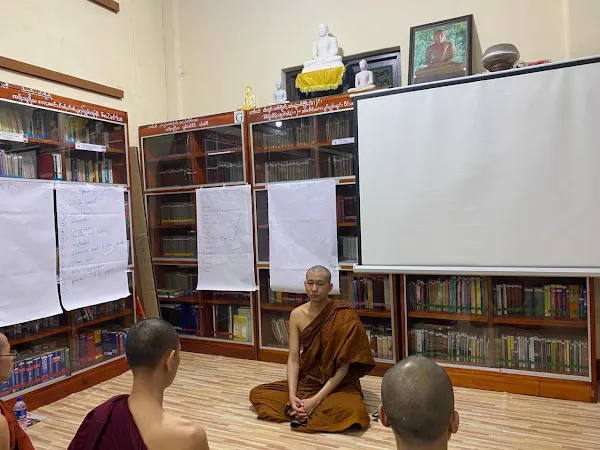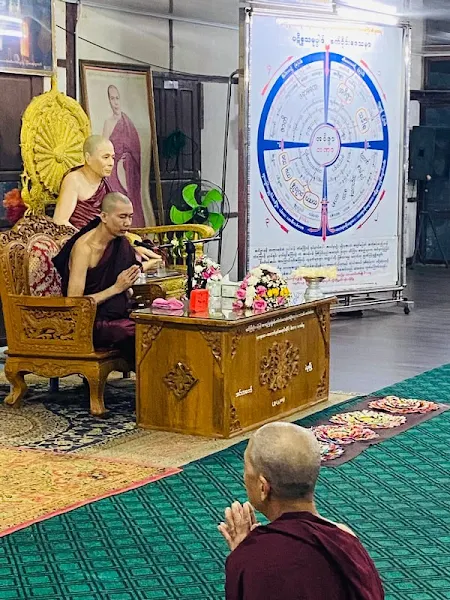"Try eating hot chili. When you eat it, do you find the chili or the spiciness? You find the spiciness. When someone who can't handle spicy food accidentally eats it, don't they spit it out? They spit it out because it's unpleasant.
But for someone who loves spicy food, if they can't have chili, they feel unsatisfied. When they get to eat it, aren't they delighted? #One_person's_experience_differs_from_another's.
Yet if a hundred different people taste the spiciness, isn't the spicy nature the same? That's #the_nature_of_spiciness. Does this spiciness discriminate between making you feel good or bad? It's free from both good and bad - it's just its nature.
Consider bitter herbs. Someone who dislikes bitterness spits it out when accidentally tasting it. But someone who likes bitter herbs finds it delightful. Are these two experiences the same? #The_bitter_taste_shows_no_favoritism though the bitterness is identical for both.
This is #happening_in_their_minds. #Observe_that_mind carefully. Isn't it taught that mastering the mind brings happiness? This is crucial.
#Examine_all_six_sense_doors this way. With sweet tastes, some find it pleasant, others don't. With bitter tastes, some enjoy it, others don't. Study this.
Looking at natural phenomena: When seeing, there's just visible form. Does the form itself contain like or dislike? In sounds? In smells? In tastes? In touches? This is #wisdom_of_natural_phenomena.
When examining these arising phenomena, don't they all cease? Can you find anything in what has ceased? #Both_the_equanimous_mind_and_the_judging_mind_are_impermanent.
Whether rich or poor, middle class - don't all die? Is death good or bad? The wealthy can't escape aging, sickness, death. What truth is this? (Suffering truth, Lord).
Whatever arises - good or bad - #isn't_it_taught_all_formations_are_impermanent? Everything ends in impermanence - wealth, poverty, middle status.
For one who understands the Four Noble Truths through the three characteristics (impermanence, suffering, non-self), isn't this the path, fruition, and Nibbana? #Only_this_wisdom_leads_to_the_summit. Isn't this worth studying?"
"When you hear Dhamma and it fades, search within yourself - isn't it taught that you'll find Dhamma there? When_you_know_its_true_nature_truth_emerges. Following likes and dislikes won't lead to truth.
Just as spiciness shows no favoritism, neither do forms. Study all six sense doors this way. Isn't it taught as arising and passing away?
Everything is taught as 'sabbe sankhara anicca' - all formations are impermanent. Whatever arises, you need to know it as "impermanence." #Can_you_know_impermanence_without_knowledge_of_characteristics? You need direct knowledge to distinguish concepts from ultimate realities, breaking wrong view first through understanding, then through development.
When you turn to the aggregates, don't they change and perish? If perishable, permanent or impermanent? Is impermanence pleasant or suffering? Is this suffering under anyone's control? Does it follow beings' wishes? Isn't it taught as non-self?
When you see impermanence, do you find mind-matter? When you see suffering, do you find mind-matter? When you see non-self, do you find mind-matter? Don't you need to distinguish between characteristics and mind-matter? This_is_full_understanding_by_investigation.
When impermanence, suffering, and non-self combine, isn't it taught as arising-passing? What truth is this? (Suffering truth, Lord). Don't you need to know this truly? When truth is known, doesn't falsehood vanish? This_is_knowledge_of_things_as_they_really_are.
With continued practice, seeing only arising-passing, knowledge matures. Doesn't the mind want liberation from aggregates? #This_is_knowledge_of_disenchantment.
Searching the whole body, can you find even a needle-point of happiness? If not found, isn't it determined as complete suffering?
At this point, don't the three moral factors of the path enter - right speech, action, livelihood? Combined with five insight knowledges, aren't there eight? At this time, are aggregates still found? Arising-passing still found? Isn't_this_taught_as_supramundane?
Stream-entry path and fruition - isn't it worth examining what's eliminated? Wrong view and doubt are eliminated as latent defilements. When these are gone, do mental actions still come? Physical and verbal actions? If not, aren't actions leading to lower realms finished? #This_is_full_understanding_as_abandoning.
For one who gains these three understandings (direct knowledge, investigation, abandoning), countless past unwholesome actions from beginningless samsara - don't they all turn to ashes? Can they still give results? Don't_they_all_become_ineffective_kamma?
This is what we must strive to achieve."
Sadhu! Together let us keep the Dharma wheel rolling.









